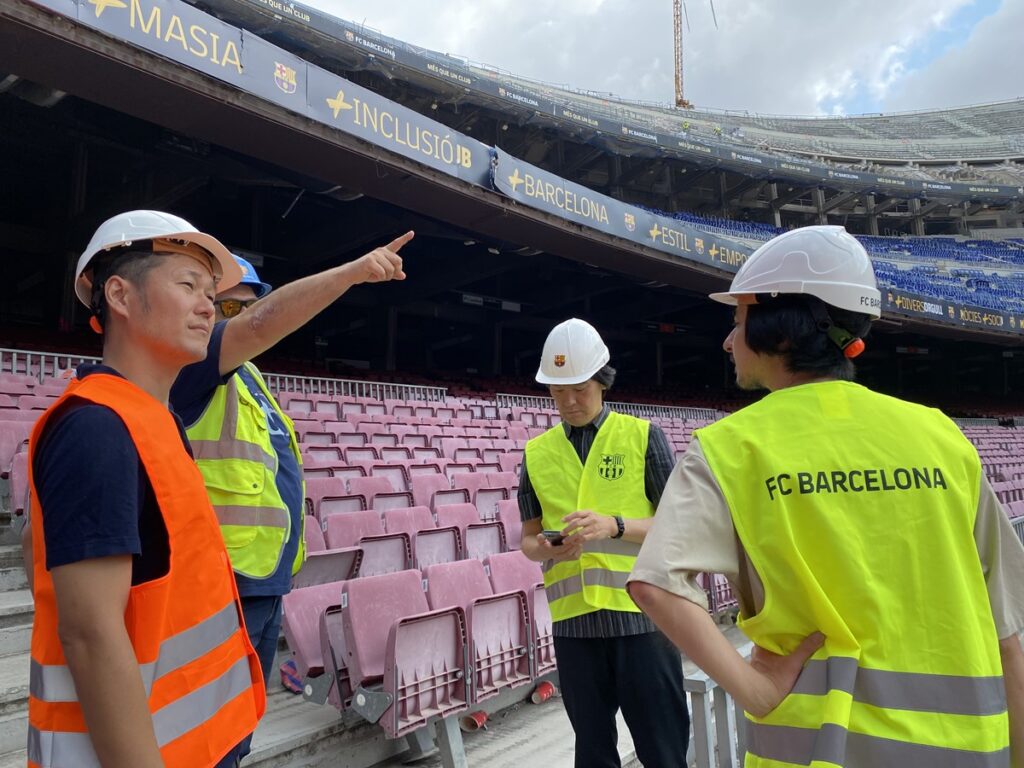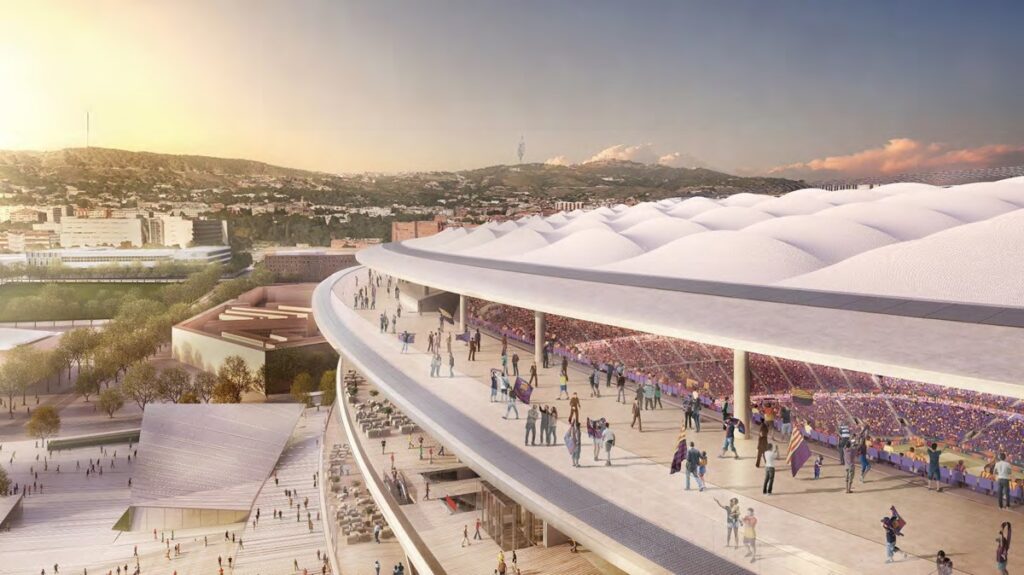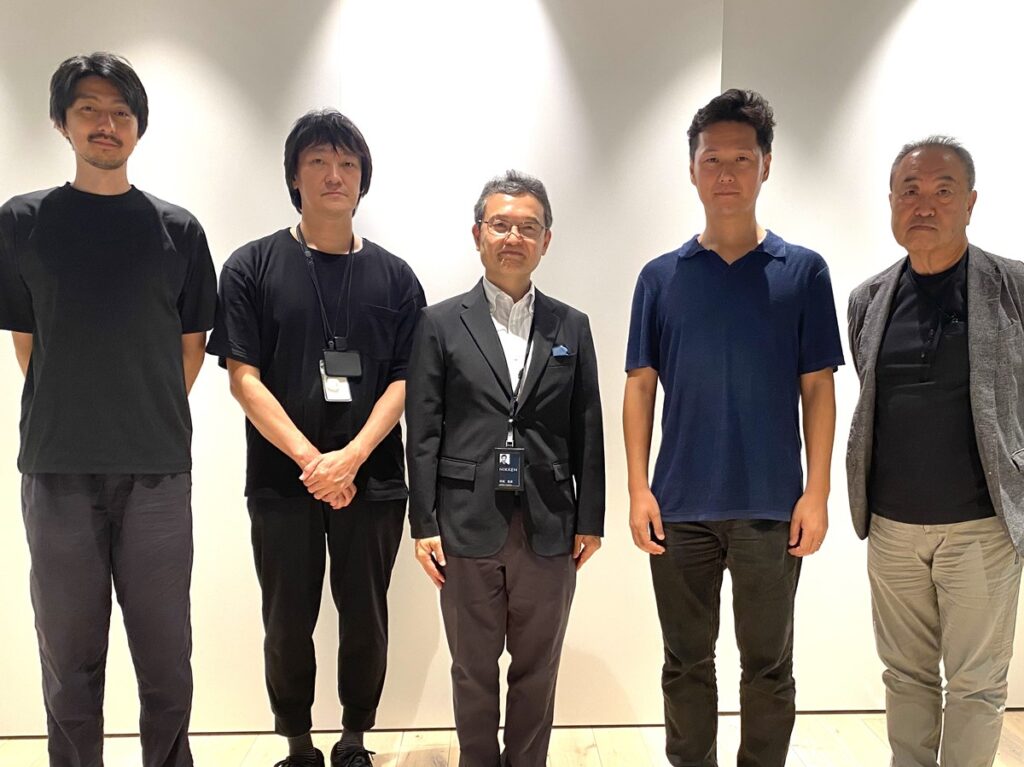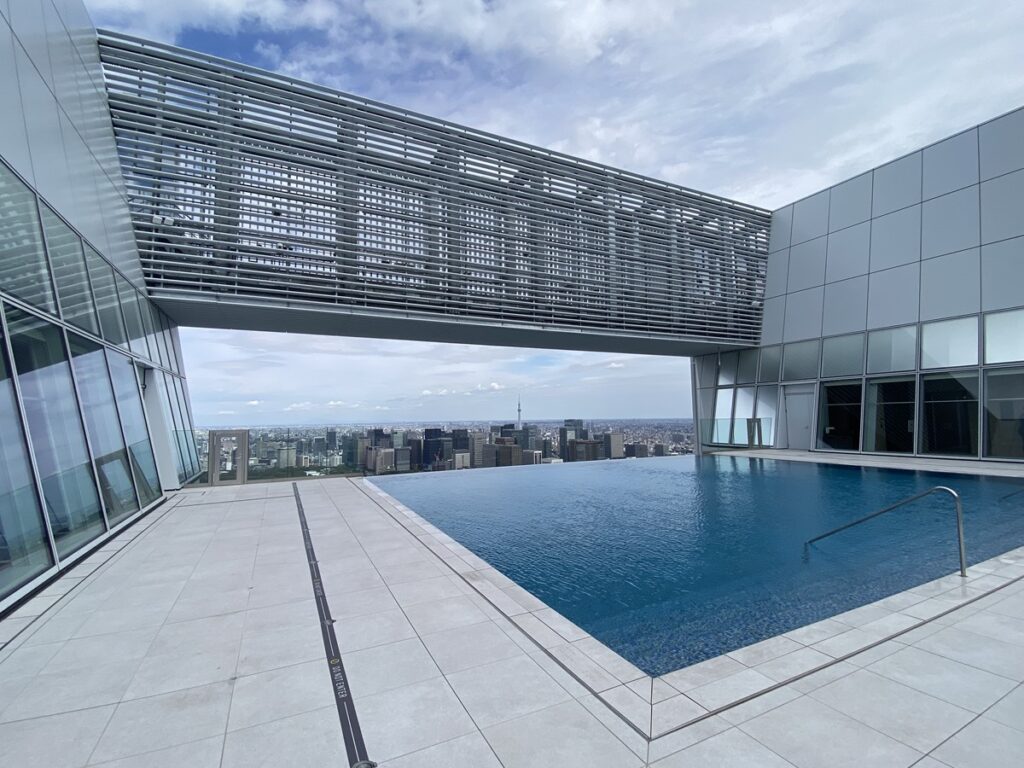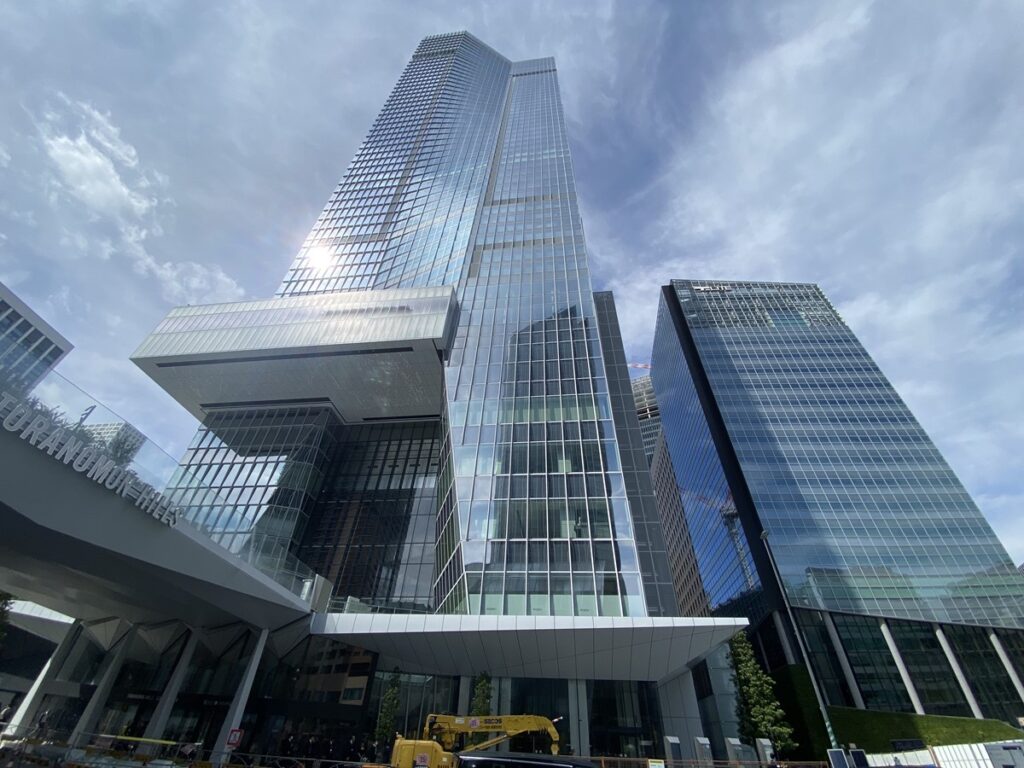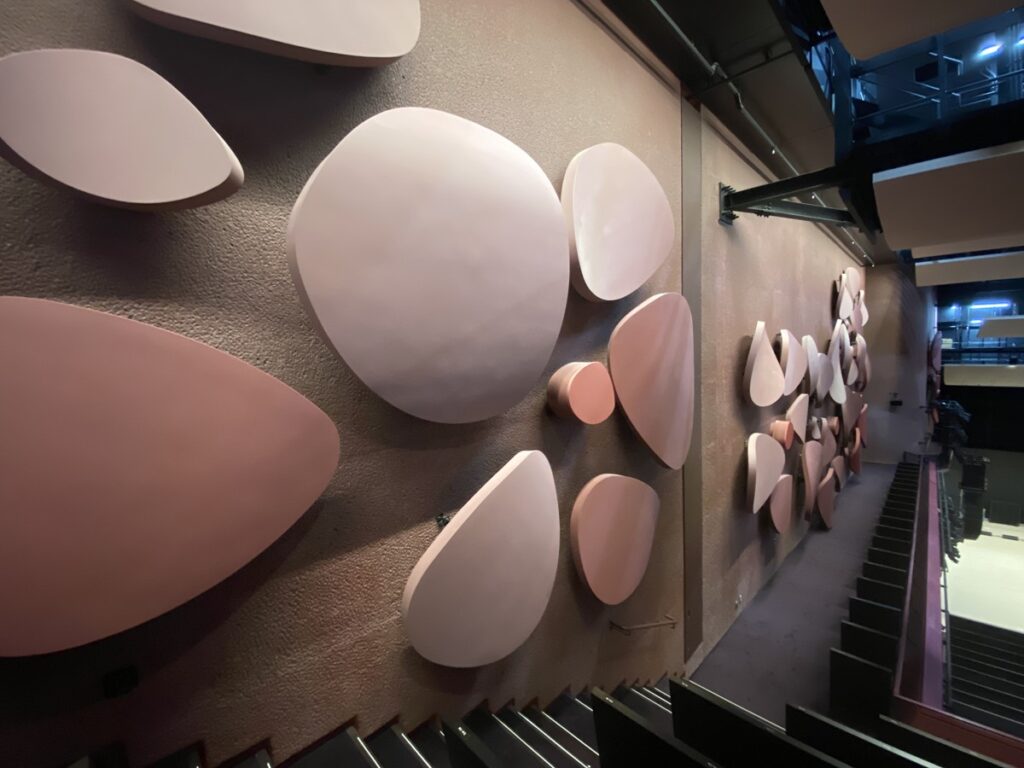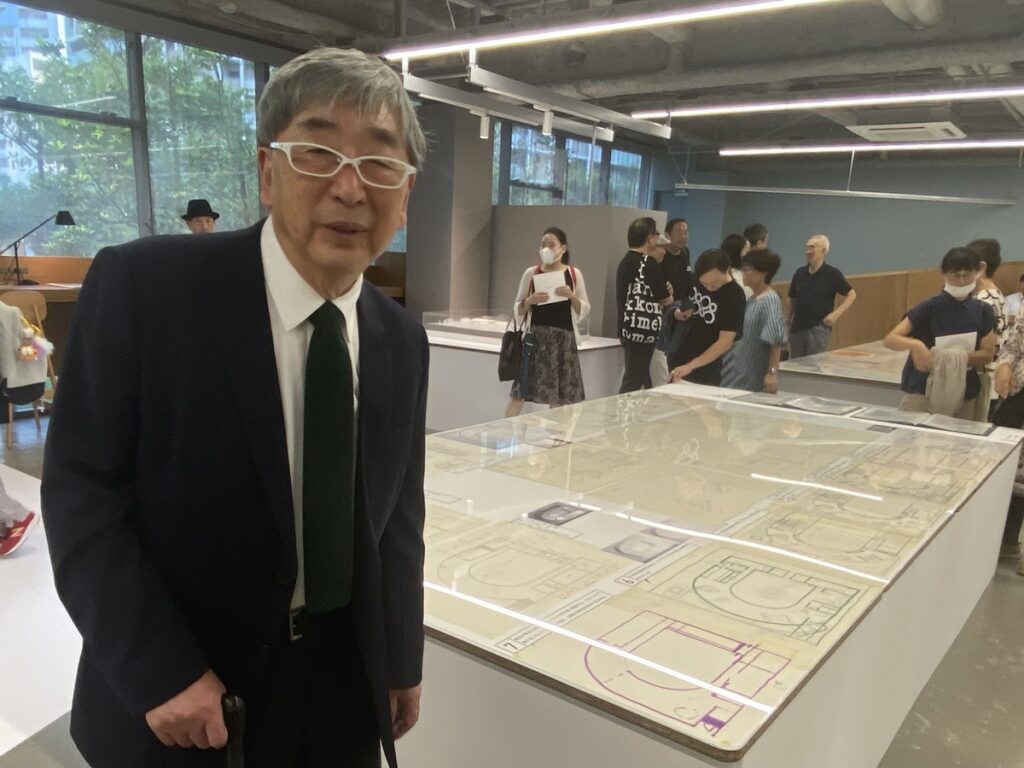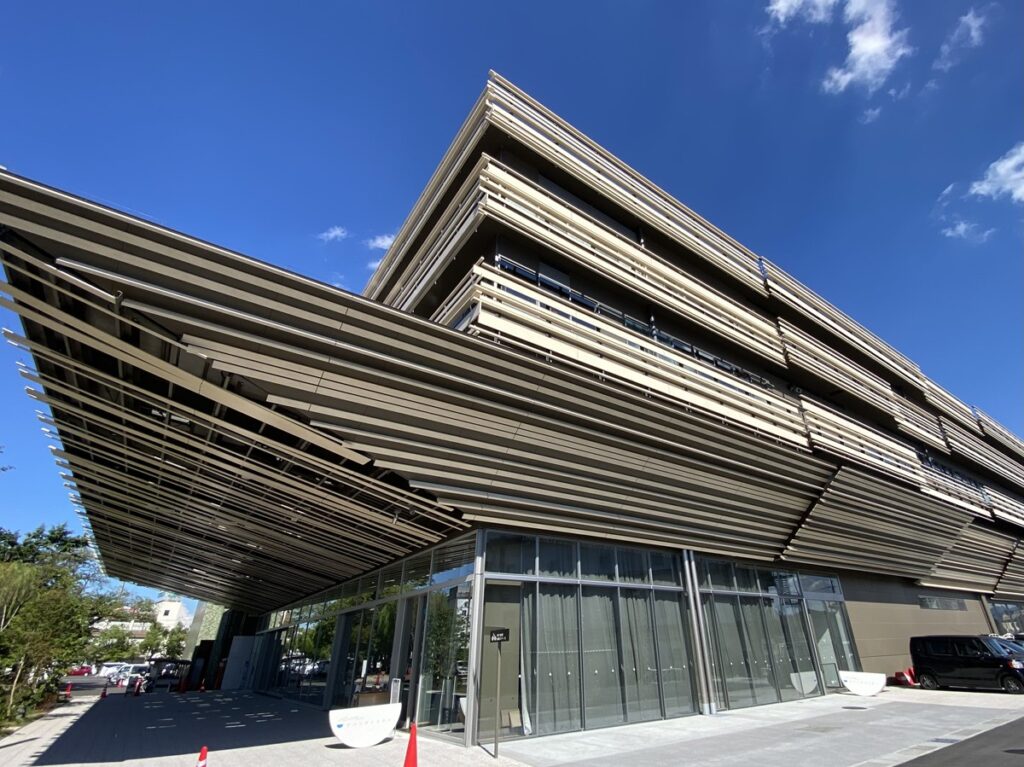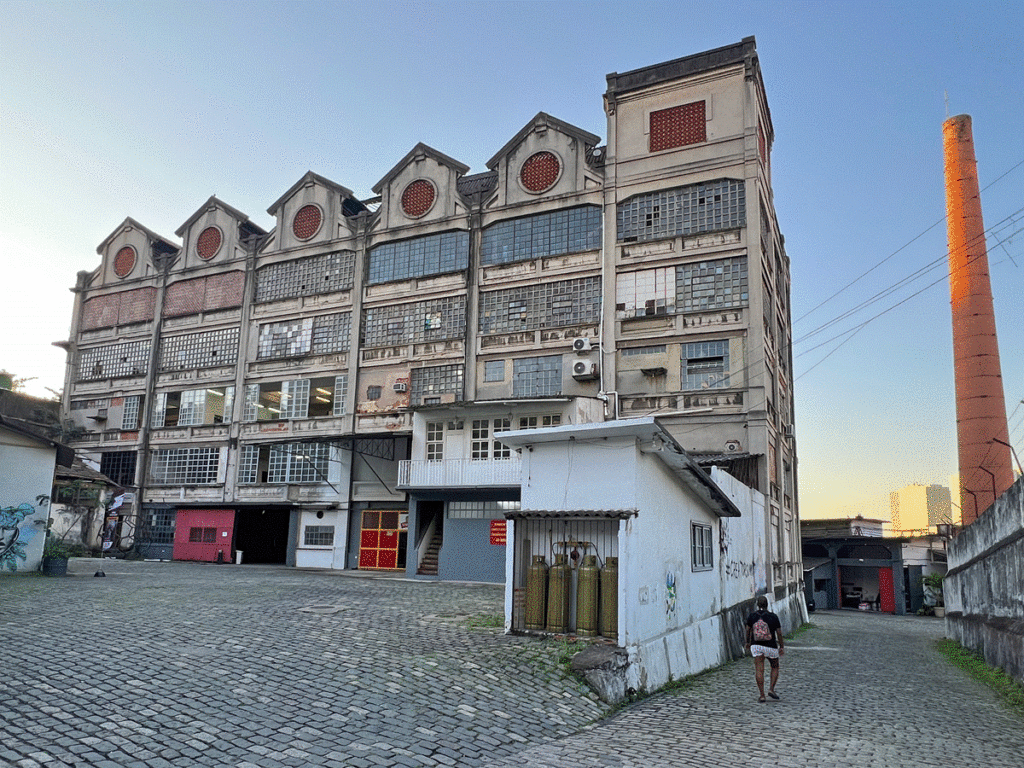–Many people read the article we wrote in Barcelona, about the beginning of construction on Spotify Camp Nou (https://bunganet.tokyo/barcelona1/). Thank you all for taking time out of your busy schedules in Barcelona.
All: Thank you as well.

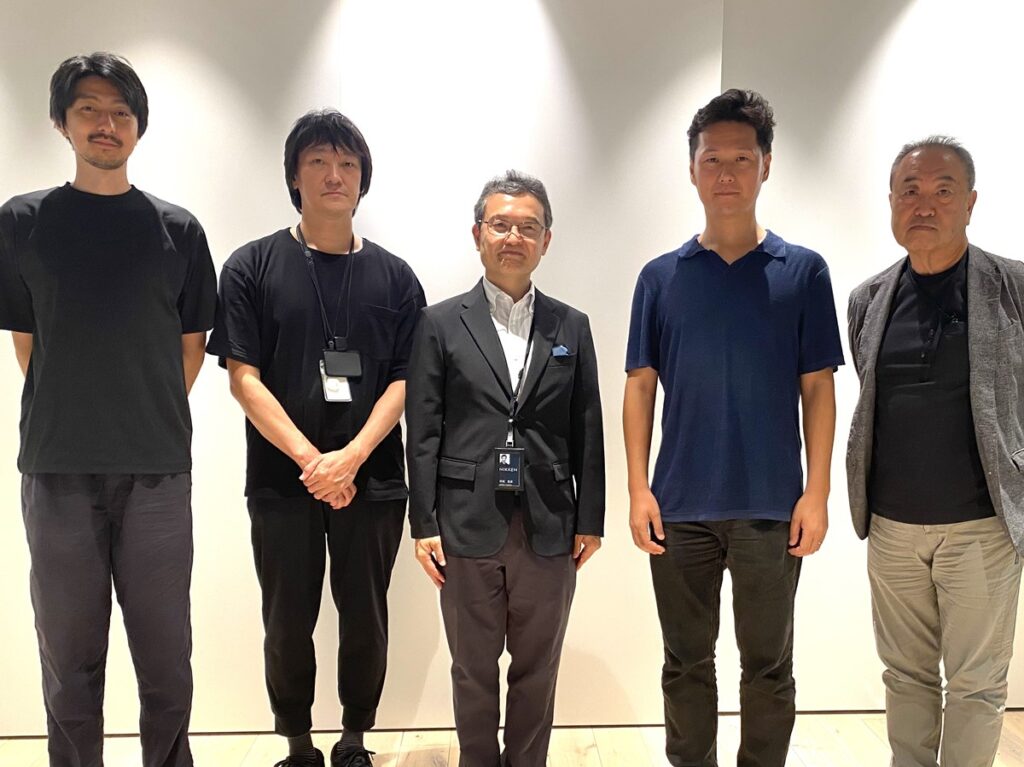
Tadahiko Murao (Executive Officer, Principal, Global Design Group): Since you have featured Spotify Camp Nou in the book you published, “Unknown Nikken Sekkei,” I am sure that you know most about the project. Hence, I will first talk about the raw and uncut stories during the competition. Then Mr. Ibano will talk about the subsequent stories.
– Wow, we’re excited to hear about the competition!


Murao: First, let me give you the chronology of events.
[From competition announcement to winning]
June 5, 2015 The international design competition to renovate the Camp Nou announced (360M Euro construction budget)
July 6, 2015 Credential review and built projects submission (26 teams applied from all over the world)
July 17, 2015 PM Abe announces the rejection of Zaha’s National Stadium design
Sept. 1, 2015 New National Stadium development competition announced
Sept. 7, 2015 Nikken Sekkei announces a plan to enter the competition as a team with Zaha Hadid Architects
Sept. 8, 2015 8 finalists announced for the Camp Nou international competition
Sept. 18, 2015 Nikken Sekkei and Zaha Hadid Architects do not form a joint venture with a construction company. The National Stadium competition is abandoned.
March 8, 2016 Nikken Sekkei wins the Camp Nou competition
[From opening the Barcelona office until the start of construction]
May 27, 2016 Nikken Sekkei opens Barcelona office
May-July 2016 Design of the Presidential Box (VVIP Space)
Aug. 2016-July 2017 Preparation of city planning documents
Aug. 2017-Mar. 2018 Schematic Design phase
April 2018?May 2019 Change and addition to Schematic Design
May-Dec. 2019 Design Development phase
Jan. 2020-Dec. 2021 Change and addition to the Developed Design
Sept. 2022?Jan. 2023 Selection of contractor (Selected Limak from Turkey. Construction cost 960M Euros)
Mar. 2023-Aug. 2023 Design supervision for contractor’s proposal
Late June, 2023 Start of construction
– Wow, this alone made it worth coming here today. This will be useful for the book I have wanted to write someday! So, the start was in June 2015? Was this an open competition?
Murao: Yes. Spotify Camp Nou was built in 1957 and designed by an architect named Francesc Mitjans. There have been two major additions to the building until now. There have been problems such as insufficient spacing between seats and aisles, the roof of the seating area being only on the main stand side, and few VIP areas. In addition, there is underground parking around the facility, but the parking ramp is in the middle of the plaza, so during the games, the circulation of cars and people intersect.
The competition was a two-phase system. The first phase was a review of qualifications, including past performance, team structure, and concept. The second phase was to present a concrete proposal. The requirements were as follows.
[Competition structure]
Two-phase selection
Phase 1: Credentials review (Past work, team structure, concept, etc.)
Phase 2: Concrete proposal
[Brief requirements]
■Number of seats: 99,354 (32,000 for 1st level, 39,000 for 2nd, 28,000 for 3rd)
⇒Expanded to 105,000 seats (20,000 for 1st level, 38,000 for 2nd, 47,000 for 3rd)
■Installation of a roof covering all seats
■Proposal for a new facade including vertical circulation (additional elevators and escalators)
■Complete renewal of the space for spectators (VIP room, lounge, etc.)
■Expansion of the museum and mega store
■More than 80,000 seats will remain available during the renovation period (85,000 of 142,000 Socio members have their own seats)
■Construction period: 2017-2021 (given at time of competition)
[Judges]
■FCB: Josep Maria Bartomeu, Susana Monje, Jordi Moix, Emili Rousand
■Architect: Juan Pablo Mitjans (son of the current Camp Nou architect)
■Lluis Cameron, Arcadi Pla, and Joan Forgas, Architectural Institute of Catalonia
■Aurora Lopez, City of Barcelona (Urban Planning Department)
■William Thomas Mannarelli, FCB Technical Team Leader
The most difficult requirement at that time was to secure more than 80,000 seats during the renovation construction. FC Barcelona has been operated by the fans called “Socios.” There were about 140,000 Socios at that time, and about 80,000 of them had their own seats at Spotify Camp Nou. So, it is difficult to say that “The team will play in another stadium during construction.”
– I’m a little hesitant to ask this, but does that mean you decided to apply while the design development for Zaha’s new National Stadium was ongoing? It was July 17, 2015, when the design was withdrawn.
Murao: Yes, we decided before the withdrawal. The requirement was to work with a local architect office, and we teamed up with Pascual Ausió Arquitectes in Barcelona. There was a Spanish employee at Nikken Sekkei who told me that Pascal’s office wanted to enter the competition in partnership with Nikken Sekkei. At the time, I was working on the design development of Zaha’s scheme for the new National Stadium. Like I said, I just thought we would tentatively try entering the first phase.
– So, it was not like another shot at the new National Stadium?
Murao: We submitted the first-phase application materials on July 6. When we were told on September 8 that we had been selected as finalists, there was a bit of an uproar within the company.
[The 8 teams in the second phase]
NIKKEN SEKKEI + Joan Pascual i Ramon Ausió Arquitectes
AECOM + b720 Arquitectes
AFL + Mateo Arquitectura
Arup Sport + Taller d’Arquitectura Ricardo Bofill
BIG + IDOM + BAAS Arquitectes
GENSLER Sport + OAB
HKS + COX + Batlle i Roig Arquitectes
POPULOUS + Mias Arquitectes + RCR Arquitectes
– In Japan, September 8 was…
Murao: It was around the time when we were talking about teaming up again with Zaha office to participate in the redo proposal for the new National Stadium. We were talking about what we would do if both proposals passed (*Nikken Sekkei ultimately declined to participate in the redo proposal). Even though we thought that we could work on both, we believed that there was no way we could win the Camp Nou. After all, it was these eight teams who had been selected.
– Ricardo Bofill and BIG remained.
Murao: Although I wrote Nikken Sekkei at the top of the list, I think we actually started at the bottom. But I think that worked well. When Nikken Sekkei enters a competition in Japan, we cannot ask strange questions and submit unconventional proposals. We are always required to submit a proposal that complies with requirements. But since we were probably the last on the list for this one, we considered what we could do instead.
– Is the second phase a one-shot proposal?
Murao: They told us they were going to do it in a workshop format. They said, “This is the Champions League.” We had meetings and worked out the schemes in stages, and we were narrowed down to four teams, then to two, then to one. That is how they would decide.
– How did you climb up from the bottom of the pack?
Murao: I don’t think people were expecting much from us at first. Since the team that worked on the new National Stadium took the lead, we were able to answer any questions that were asked during the workshop. The Zaha’s proposal for the new National Stadium dealt with the most difficult constraints in the world, and we had to consider all the various conditions. This meant that we were prepared to answer all the questions they asked flawlessly. How the roof should be, how the wind should flow onto the pitch, and so on. As we talked during the workshops, they started to think, “These people really know their stuff.”
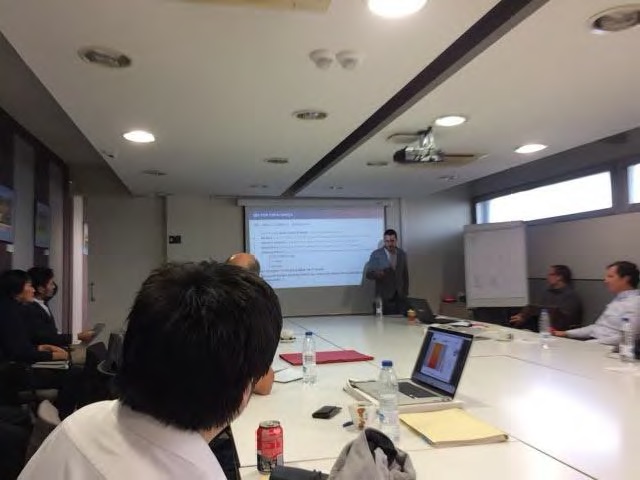
– Did the members of the new National Stadium all join the Spotify Camp Nou project?
Murao: Ibano volunteered himself when there was an internal call for members. This was the team. It must be unprecedented to have so many members lined up. We put particular emphasis on the presentation. We tried to convey the message with graphics and drawings rather than words.

To be continued (the final round).


